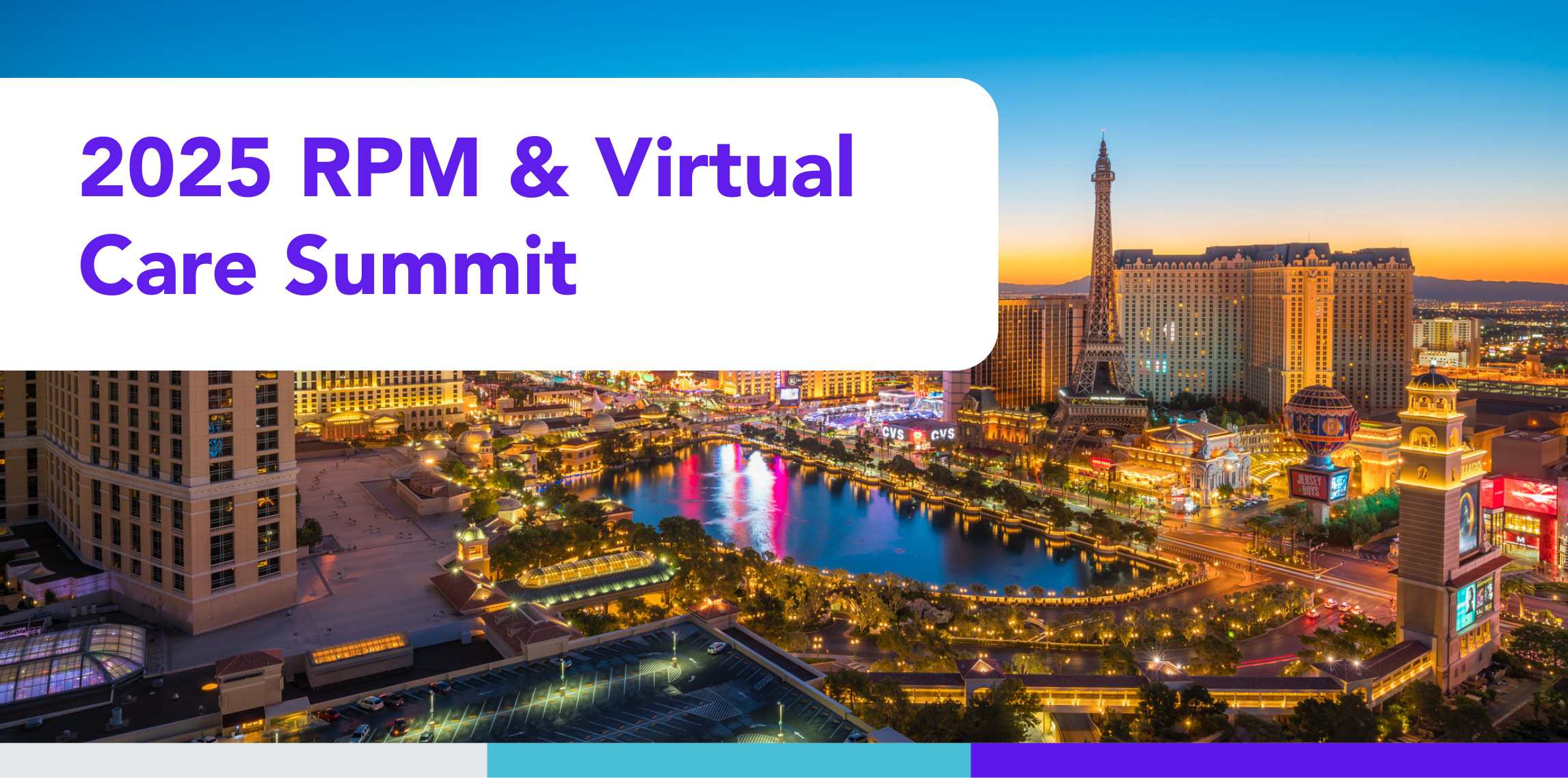The 2025 RPM & Virtual Care Summit in Las Vegas brought together executives, clinicians, researchers, vendors, and policymakers to take stock of where remote patient monitoring really stands today.
The mood was pragmatic: optimism about RPM’s potential, but sober recognition of the structural, policy, and operational challenges that still stand in the way of scale.
Here’s what stood out to me as both a nurse and someone who helps health systems implement RPM every day.
1. RPM Works…. But It’s Not Yet “In the Bones”
Across academic medical centers, health systems, and provider groups, the message was the same: RPM saves lives, but it hasn’t yet been fully built into enterprise operations.
- Staffing models are still inconsistent.
- Programs vary widely between flexible pilots and rigid, standardized approaches.
- Leaders are still asking how to measure outcomes that matter to both patients and CFOs.
Or as one speaker put it: “We know RPM works. We just haven’t figured out how to make it part of the system’s DNA.”
2. Pain Points Are Shared Everywhere
Even the most advanced organizations flagged the same challenges:
- Clinical staffing shortages —> most lack protected FTEs for RPM.
- Integration friction —> device platforms and EHRs still don’t talk well enough.
- Reimbursement uncertainty —> CPT codes exist but lack long-term guarantees.
- Digital divide —> broadband and tech literacy gaps limit access.
- Data without action —> lots of dashboards, but slow translation into timely workflows.
As one panelist said: “We’re not short on data. We’re short on good decisions and timely action.”
3. AI & Automation: Excitement, With Guardrails
Artificial intelligence was everywhere at this summit. Use cases included:
- Risk stratification to flag disengagement or early decompensation
- Alert triage to prioritize RN follow-up
- Note summarization and workflow nudges
But the caution was just as loud as the enthusiasm:
- Providers want support, not replacement of clinical judgment.
- Black-box models won’t fly.
- AI must reduce noise and workload, not add another dashboard.
4. What Success Looks Like
Several systems showed what’s possible when RPM is embedded well:
- UMMC: Demonstrated meaningful improvements in hypertension outcomes across Mississippi, one of the nation’s most challenging and underserved populations, by combining tailored enrollment strategies with community engagement.
- Michigan Medicine: Achieved a 59% reduction in hospital admissions within six months of RPM enrollment, including high-risk conditions such as heart failure and hypertension.
- Mayo Clinic: Demonstrated how RPM can extend safely into oncology and other complex populations, lowering acute care utilization while maintaining high patient satisfaction and proving scalability.
- NYU Langone: Rapidly expanded RPM post-COVID by embedding monitoring into existing clinical workflows, enabling sustainable scale.
- Atlantic Health: Applied predictive analytics to target nurse outreach, ensuring care team resources were focused where patients needed it most.
Together, these case studies underscored a clear message: when RPM is integrated into real workflows, supported by data and engagement strategies, it drives measurable outcomes, equity, and sustainability at scale.
5. Policy Is Still the Wild Card
The policy conversation was sobering:
- Pandemic-era flexibilities are expiring.
- CPT codes are reimbursed now, but lack stability.
- Cross-state licensure continues to block scale.
- Advocacy gaps remain: too few systems are telling Washington what’s really happening on the ground.
The advice from the stage was clear: “Stop making vague claims about cost savings. Show executives and policymakers the risk you’re mitigating.”
What This Means for AMC Health
The summit reinforced exactly where AMC Health is leaning:
- Human-first AI and automation that cut through noise, reduce RN workload, and surface real risk.
- Outcome-focused storytelling demonstrating reduced readmissions, improved chronic disease metrics, and ROI per avoided hospitalization + shortened length of stay.
- Platform consolidation with fewer vendors, unified dashboards, and EHR integration that reduces friction.
- Policy readiness in helping clients navigate reimbursement shifts and regulatory changes.
- Equity at the core with tools designed to reach underserved populations with accessible formats.
Final Thought
The 2025 RPM Summit made one thing clear: virtual care isn’t going away, but the next phase will be defined by real outcomes, thoughtful automation, and system-wide alignment.
For AMC Health, this isn’t theoretical. It’s what we’re doing now: embedding consultative expertise, automation, SDOH and behavioral health screening, patient education, and data integration into every program.
If you missed the summit, here’s the takeaway: RPM is no longer a side project. It’s the foundation of the next era of care, and with the right partner, it’s ready to scale.

%20(1).png)
-2.jpg)

-2.jpg)